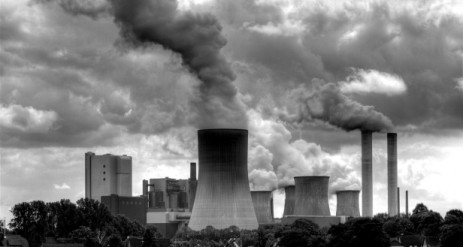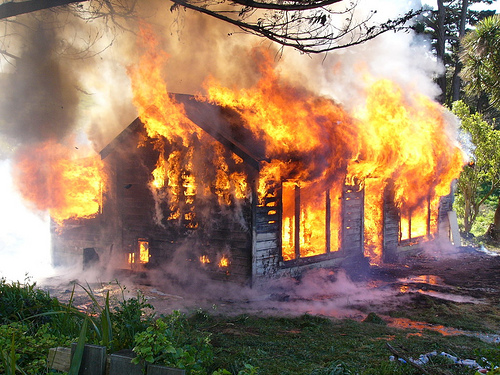I’ve argued that the Senate climate bill takes away some EPA powers under the Clean Air Act but overall gives the agency more power, and specifically that the bill preserves EPA authority to regulate both new and old coal plants, which is the power it most needs.
Now let’s take a closer look at the parts of the Clean Air Act that are getting preempted. This could get nerdy, so hang onto your hats!
The part of the Clean Air Act designed to address vehicles and other mobile sources (Title II) is untouched by the American Power Act. With the deal Obama is pulling together among the feds, California, and the auto companies — working on auto efficiency standards for 2017 forward — it seems unlikely any attempt to preempt California’s tailpipe standards will succeed on the floor either. There is at least temporary peace in the land on the vehicle front.
So this is about stationary sources (Title I) — factories, waste incinerators, power plants, and the like — which are responsible for 72 percent of U.S. greenhouse gas emissions. Let’s look at a few of the ways greenhouse gases from stationary sources could be regulated under the Clean Air Act and assess the significance of their loss. Acronyms away!
- National Ambient Air Quality Standards, or NAAQS, set the level at which a pollutant may be concentrated in the air. EPA sets the standards and states are responsible for implementing plans to meet them. Regions that exceed their permitted levels (“nonattainment zones”) pay fines and are subject to stricter regulations. The pollutants that fall under this program are called “criteria pollutants” and they include particulate matter, SO2, and NO2.
Big loss for greenhouse gases? Depends who you ask. I think it’s fair to say that the majority of policy analysts agree that NAAQS wouldn’t work for greenhouse gases. (See, e.g., this report from the Congressional Research Service.) Since the concentration of GHGs in the atmosphere is uniform across the globe, there’s no way an individual country, much less individual states, could bring their concentrations down without the entire world doing so. And there’s a provision in the Clean Air Act that says if a state can show it’s in nonattainment because of international pollution — which is more or less true by definition for greenhouse gases — it doesn’t have to meet the NAAQS.
The Center for Biological Diversity has tried to make the case that EPA should set a NAAQS of 350 ppm for greenhouse gases, which would effectively put the entire country in nonattainment. I believe someone from CBD will be dropping by soon to make the case directly to Grist readers, so y’all can draw your own conclusions. Suffice it to say, I haven’t talked to many people outside CBD who believe it’s plausible. It would certianly be wildly ambitious for an executive branch agency, far more ambitious than anything contemplated to date. If the EPA acted that boldly, it’s likely Congress would simply shut the program down.
(One nerdy sidebar: there’s some new science about “CO2 domes” that form over cities and exascerbate the effects of local pollutants. If that science turns out to be solid — if the concentration of CO2 in the air is not uniform — it could change the way we think about how to regulate it.)
- National Emissions Standards for Hazardous Air Pollutants, or NESHAPs, are emissions standards for particularly toxic pollutants that are harmful at any concentration — think asbestos or hexachlorocyclopentadiene. These nasties typically have to be reduced as much as possible, using Maximum Achievable Control Technology (MACT), which also happens to be the name of my speed metal band.
Big loss? Nah. Whatever their evils, greenhouse gases aren’t poisonous, so it wouldn’t make sense to use these provisions. Plus, NESHAPS cover emissions down to 10 tons, and if EPA regulated every source of 10 tons of CO2 or more, it would be requiring permits of everything down to large suburban houses. Not good.
- The International Air Pollution (IAP) section says EPA can regulate pollutants that are harming other countries. Rarely used.
Big loss? No. When Mass v. EPA was decided, there was some speculation that EPA might use IAP provisions to tackle carbon — see, for example, “Regulation of Greenhouse Gases Under Section 115 of The Clean Air Act” by Roger Martella and Matthew Paulson, as well as here, here, and here. But EPA seems to have decided against it, so preemption here is largely meaningless as well.
- Pollutants that don’t fall into any of the foregoing categories are called “designated pollutants” and are regulated under the New Source Performance Standards (NSPS) program. Under Section 111 of the Clean Air Act, EPA can set performance standards for new (or substantially modified) pollution sources. It can also, under Section 111(d), set performance standards for existing sources.
Big loss? Yeah. This is what the real controversy is about. Most analysts have identified the “designated pollutant under NSPS” model as the most promising route to addressing greenhouse gases under the Clean Air Act. (Again, see the CRS report.)
It’s important to note that the American Power Act does not completely preempt NSPS for greenhouse gases. It preempts NSPS for new sources and it preempts NSPS for existing sources, with the exception of coal plants. As I argued yesterday, this is incredibly significant: the power to directly regulate existing coal-fired power plants — which are responsible for 28 percent of total U.S. greenhouse gas emissions — is something enviros have been seeking for years. Its presence in the bill is testament to the fact that green groups fighting for the Clean Air Act made an impression.
Nonetheless, losing NSPS for new sources and existing sources other than coal plants is a blow. It’s worth fighting to restore NSPS to full strength.
The case for preserving Clean Air Act performance standards
Industry thinks that performance standards for greenhouse gas sources would amount to a second, duplicative level of regulation on those sources, since they’re already subject to the cap-and-trade program. Greens argue, reasonably in my view, that performance standards for large emitters can work perfectly well alongside aggregate pollution standards like cap-and-trade, just as they do with acid-rain pollution.
Industry tells scary stories about church bake sales and dry cleaners being forced to get pollution permits from EPA, but the American Power Act could simply instruct EPA to apply performance standards only to large sources of CO2 (say, 25,000 tons/year or more, as the EPA is doing anyway with its “tailoring rule“). That would keep the size and intrusiveness modest; many of those sources already have to file for permits.
The reason enviros want to keep performance standards is that the cap-and-trade system in current bill contains low targets and plentiful offsets. The worry is that large emitters in many industrial categories will delay and delay, buying offsets to cover their obligations, until sudden, wrenching changes are required around 2030. That will prompt political backlash and a call to weaken the targets further.
Something needs to be done to insure that all industrial sectors are put on a steady technological glidepath toward zero carbon, starting today. That’s what performance standards can do. (NRDC’s Dave Hawkins testified to the Senate Energy and Natural Resources Committee [PDF] on this in 2009, arguing for preserving NSPS for greenhouse gases. His remarks are a cogent summary of the enviro case.)
This, ultimately, is what the choice comes down to: whether to accept the loss of broad New Source Performance Standards in exchange for a declining cap on carbon coupled with targeted performance standards for coal plants. As I said in my first post, I think the latter is preferable by pretty wide margin, but it’s certainly not an easy call.
One aspect of all this I haven’t gotten into yet is the state of play on non-greenhouse-gas pollutants under the Clean Air Act. There’s a lot going on, and some big battles coming down the pike. In my next post I’ll sketch those coming battles and argue that they make passing a climate bill now even more urgent.



